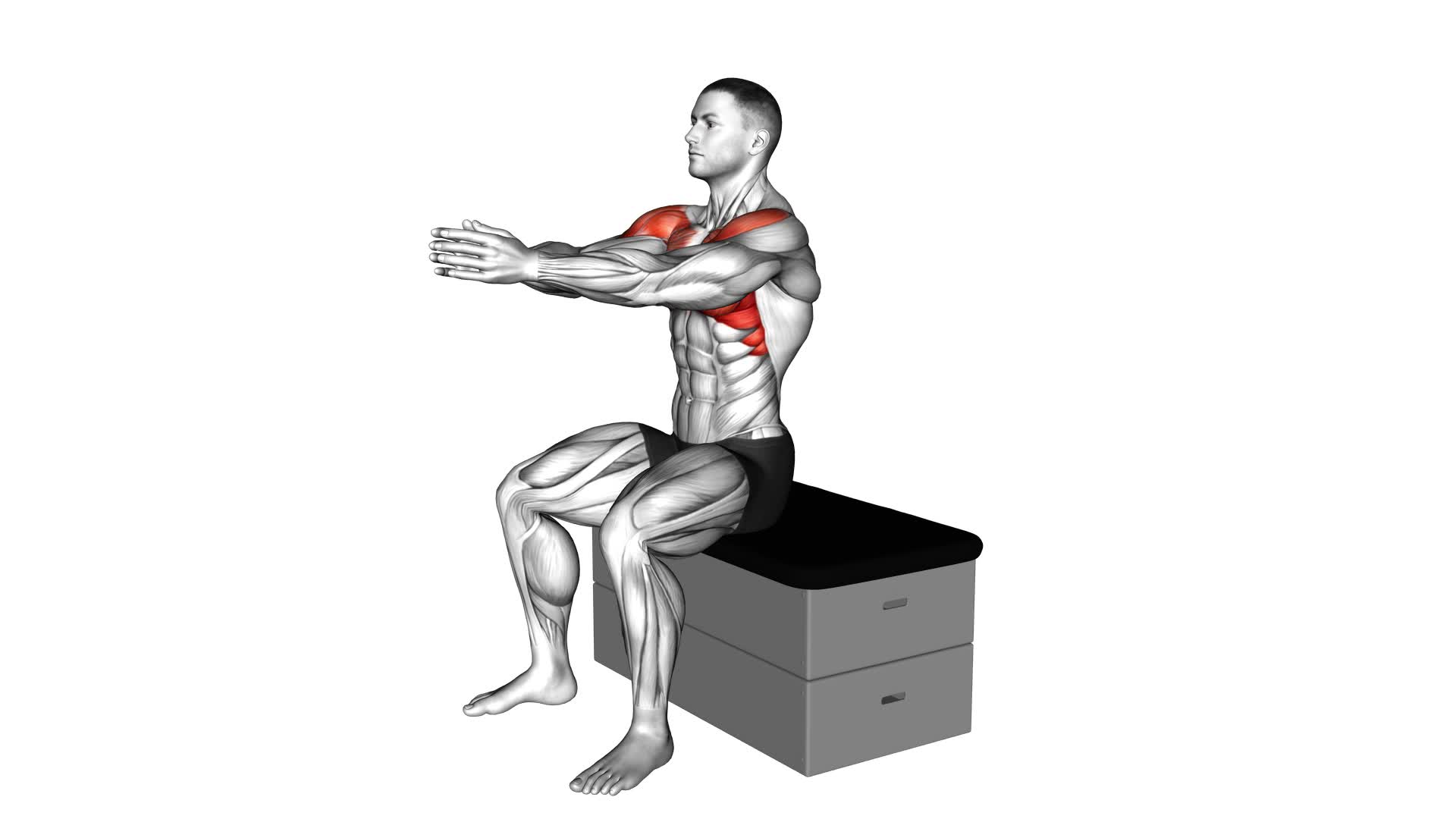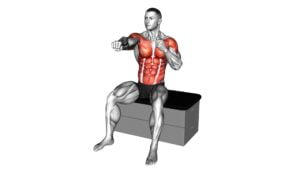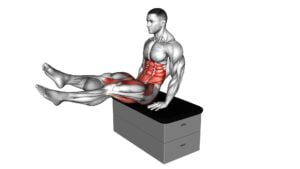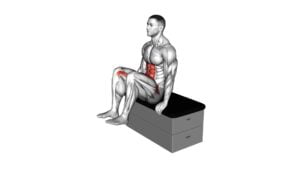Sitting Fly on a Padded Stool – Video Exercise Guide & Tips

Are you looking for an effective exercise to target your upper body?
Watch This Exercise Video
Look no further than the sitting fly on a padded stool. This exercise not only works your chest and arms, but also engages your core.
In this video exercise guide, we will show you the proper form and technique, variations and progressions, as well as common mistakes to avoid.
Get ready to take your workout to the next level with this challenging yet rewarding exercise.
Key Takeaways
- The sitting fly exercise targets upper body muscles, including shoulders, chest, and arms.
- Proper form and technique, such as maintaining a straight back and engaging core muscles, are crucial for maximizing the benefits and avoiding common mistakes.
- The exercise can be modified for beginners by using lighter weights or resistance bands.
- The sitting fly exercise can improve posture by targeting the upper back and shoulder muscles, alleviating discomfort caused by poor posture.
Benefits of the Sitting Fly Exercise
You can experience several benefits from performing the Sitting Fly exercise.
This exercise primarily targets your upper body, specifically your shoulders, chest, and arms. By incorporating the Sitting Fly into your workout routine, you can strengthen and tone these muscle groups, leading to improved upper body strength and definition. Additionally, the Sitting Fly exercise helps to improve posture by targeting the muscles in your upper back and shoulders, which can help alleviate discomfort caused by poor posture.
Another benefit of the Sitting Fly exercise is that it can be easily modified to suit your fitness level and goals. For beginners, using lighter dumbbells or resistance bands can make the exercise more manageable. As you progress, you can increase the weight or resistance to continue challenging your muscles. Furthermore, you can vary the tempo of the exercise by performing it at a slower pace to increase muscle endurance or at a faster pace to enhance cardiovascular fitness.
To maximize the benefits of the Sitting Fly exercise, it's important to maintain proper form throughout the movement. Sit on a padded stool with your feet flat on the floor and your back straight. Hold a dumbbell in each hand, palms facing forward. With a slight bend in your elbows, raise your arms out to the sides until they're parallel to the floor. Slowly lower the dumbbells back down to the starting position. Remember to breathe steadily and engage your core for stability.
Proper Form and Technique
To maintain proper form and technique during the Sitting Fly exercise, it's crucial to focus on your posture and engage the correct muscles throughout the movement. Many people make the mistake of hunching their backs or slouching while performing this exercise. This can put unnecessary strain on your lower back and limit the effectiveness of the workout. Instead, make sure to sit up straight with your shoulders relaxed and your spine aligned. Engage your core muscles to stabilize your body and maintain proper balance.
Another common mistake is using too much weight or resistance, especially for beginners. It's important to start with a weight that allows you to perform the exercise with proper form. Gradually increase the weight as your strength and technique improve. Remember, it's better to start light and progress gradually than to risk injury by lifting too much weight.
For beginners, it may be helpful to modify the exercise by using lighter weights or resistance bands. This will allow you to focus on mastering the proper form and technique before progressing to heavier weights. Additionally, using a stability ball instead of a padded stool can provide extra support and help you maintain proper alignment.
By paying attention to your posture, engaging the correct muscles, and making appropriate modifications, you can ensure that you're performing the Sitting Fly exercise with proper form and technique. This will maximize the benefits of the exercise and minimize the risk of injury.
Now that you understand the importance of maintaining proper form and technique, let's move on to the next section and discuss the equipment needed for the Sitting Fly exercise.
Equipment Needed for the Exercise
To perform the Sitting Fly exercise, you'll need a padded stool and additional equipment. The padded stool provides a comfortable and stable surface for you to perform the exercise. It helps to maintain proper form and stability throughout the movement.
In addition to the padded stool, you may also need exercise equipment and workout gear to enhance your workout experience. This can include resistance bands, dumbbells, or kettlebells, depending on your fitness level and goals. Resistance bands can be used to add resistance to the exercise, making it more challenging and effective. Dumbbells or kettlebells can be used to increase the intensity of the exercise by adding weight.
It is important to choose the right exercise equipment and workout gear that suits your needs and fitness level. You should consult with a fitness professional or trainer to determine the appropriate equipment for your specific goals and abilities. They can provide guidance on selecting the right equipment and demonstrate proper usage to avoid injuries.
Remember to always use exercise equipment and workout gear safely and follow proper form and technique to maximize the benefits of the Sitting Fly exercise.
Variations and Progressions
Now let's explore the variations and progressions of the Sitting Fly exercise.
These options allow you to increase the difficulty level and challenge your muscles in different ways.
Additionally, modifications are available for beginners to help them build strength and improve their form before advancing to more advanced variations.
Increasing Difficulty Levels
Start by incorporating variations and progressions to increase the difficulty levels of the Sitting Fly exercise on a padded stool. This will help you challenge your muscles and increase the intensity of your workout.
Here are some advanced modifications to consider:
- Increase the weight: Hold a dumbbell or a weighted plate while performing the exercise to add resistance and increase the difficulty.
- Lift one leg: Try lifting one leg off the ground while maintaining balance on the stool. This will engage your core and challenge your stability.
- Add a twist: As you lift your arms, incorporate a twist to the side, engaging your oblique muscles and adding an extra challenge.
Modifications for Beginners
For beginners, there are several modifications and progressions you can incorporate to make the Sitting Fly exercise on a padded stool more accessible and manageable.
If you find it difficult to balance on the stool, start by using a chair with a backrest for added support. As you gain confidence and stability, you can progress to using the padded stool.
Another modification is to perform the exercise seated on the floor with your legs crossed or extended in front of you. This seated variation reduces the challenge of balancing on the stool and allows you to focus on engaging your core and upper body.
Remember to listen to your body and start with the modification that feels most comfortable for you before gradually progressing to more challenging variations.
Common Mistakes to Avoid
To get the most out of your sitting fly exercise on a padded stool, it's important to maintain proper form.
Avoid the common mistake of using excessive weight, as this can lead to strain or injury.
Focus on improving your balance and stability by engaging your core and using controlled movements throughout the exercise.
Proper Form Importance
Maintain proper form to avoid common mistakes while performing the Sitting Fly exercise on a padded stool. Proper form is essential for the effectiveness of the exercise and for preventing injuries. Here are some important points to keep in mind:
- Importance of posture: Maintain a tall and upright posture throughout the exercise. Engage your core muscles and keep your shoulders back and down. This will help activate the correct muscles and prevent strain on your back and neck.
- Stabilize your body: Keep your feet firmly planted on the ground, ensuring stability and balance. This will help you maintain control and avoid unnecessary movements.
- Control the movement: Slow and controlled movements are crucial for the Sitting Fly exercise. Avoid using momentum or swinging your arms, as this can lead to improper form and potential injuries.
Avoiding Excessive Weightlifting
To avoid excessive weightlifting and common mistakes, focus on maintaining proper form and controlling your movements while performing the Sitting Fly exercise on a padded stool.
Excessive weightlifting can lead to various risks such as muscle strains, joint injuries, and overtraining. It's important to listen to your body and not push yourself beyond your limits.
Instead of solely relying on heavy weights, consider incorporating alternative exercises into your routine to achieve a balanced workout. Some alternatives to weightlifting include bodyweight exercises, resistance band workouts, and yoga. These exercises can help improve strength, flexibility, and stability without the added risk of excessive weightlifting.
Balance and Stability Tips
Improve your balance and stability during the Sitting Fly exercise on a padded stool by focusing on proper form and controlled movements. To enhance your balance training and core strength, keep the following tips in mind:
- Engage your core muscles throughout the exercise to maintain stability.
- Keep your gaze forward and avoid looking down to help maintain balance.
- Start with a low intensity and gradually increase the difficulty level as you become more comfortable and stable.
By implementing these tips, you can optimize your balance and stability during the Sitting Fly exercise.
Now, let's move on to the next section where we'll discuss some additional tips for getting the most out of this exercise.
Tips for Getting the Most Out of the Exercise
Maximize your results by incorporating these tips into your Sitting Fly on a Padded Stool exercise routine.
To get the most out of this exercise, it's important to focus on proper form and technique. One common misconception is that you need to use a lot of force to push the stool away from you. However, the key is to engage your core muscles and use controlled movements. This will help to target your abdominal muscles more effectively and prevent unnecessary strain on your back.
Another tip for maximizing results is to maintain a steady rhythm throughout the exercise. Avoid rushing through the movement or using momentum to swing the stool. Instead, focus on a slow and controlled motion, emphasizing the contraction of your abdominal muscles as you pull the stool back towards you.
Additionally, it's important to remember to breathe properly during the exercise. Take deep breaths in and out, allowing your breath to guide the movement. This will help you stay focused and maintain the correct form.
Finally, don't forget to incorporate variations and progressions into your routine. As you become more comfortable with the exercise, try increasing the resistance or adding in different movements to challenge your muscles in new ways.
Frequently Asked Questions
How Many Calories Does the Sitting Fly Exercise Burn?
The sitting fly exercise can help you burn calories and improve your posture. While the exact number of calories burned will vary depending on factors like weight and intensity, it's generally considered a moderate-intensity exercise.
Can the Sitting Fly Exercise Help Improve Posture?
The sitting fly exercise, in its various forms, can be beneficial for improving posture. By engaging the core muscles and back, it helps to strengthen the muscles that support proper alignment of the spine.
This exercise also targets the shoulders and upper body, promoting better posture by reducing slouching and rounding of the shoulders.
Incorporating sitting fly variations into your routine can contribute to a healthier posture and overall body alignment.
Is the Sitting Fly Exercise Suitable for Individuals With Back or Neck Pain?
The sitting fly exercise is a great way to improve your posture and strengthen your core muscles.
However, if you have back or neck pain, it's important to be cautious. Talk to a healthcare professional before attempting this exercise, as they can provide guidance on modifications or alternative variations that may be more suitable for your condition.
It's crucial to prioritize your safety and avoid exacerbating any existing pain or discomfort.
How Often Should the Sitting Fly Exercise Be Performed for Optimal Results?
To achieve optimal results from the sitting fly exercise, it's important to consider the frequency of your workouts.
The benefits of the sitting fly exercise can be maximized by performing it consistently. By incorporating this exercise into your routine on a regular basis, you can strengthen your muscles and improve your overall fitness.
Remember to listen to your body and allow for proper rest and recovery between sessions.
Consistency is key for seeing the best results.
Can the Sitting Fly Exercise Be Modified for Individuals With Limited Mobility?
Modified variations of the sitting fly exercise can be beneficial for individuals with limited mobility. By making equipment modifications, such as using resistance bands or lighter weights, you can still target the muscles in your upper body while seated.
These modifications allow you to adjust the intensity and range of motion to meet your specific needs. It's important to consult with a fitness professional or physical therapist to ensure you're performing the modified exercise safely and effectively.
Conclusion
In conclusion, the sitting fly exercise is a beneficial workout that targets the core and upper body muscles.
By maintaining proper form and technique, using the necessary equipment, and avoiding common mistakes, you can maximize the effectiveness of this exercise.
Remember to listen to your body and progress at your own pace.
With consistency and dedication, the sitting fly exercise can help improve your strength and overall fitness level.

Author
Years ago, the spark of my life’s passion ignited in my mind the moment I stepped into the local gym for the first time. The inaugural bead of perspiration, the initial endeavor, the very first surge of endorphins, and a sense of pride that washed over me post-workout marked the beginning of my deep-seated interest in strength sports, fitness, and sports nutrition. This very curiosity blossomed rapidly into a profound fascination, propelling me to earn a Master’s degree in Physical Education from the Academy of Physical Education in Krakow, followed by a Sports Manager diploma from the Jagiellonian University. My journey of growth led me to gain more specialized qualifications, such as being a certified personal trainer with a focus on sports dietetics, a lifeguard, and an instructor for wellness and corrective gymnastics. Theoretical knowledge paired seamlessly with practical experience, reinforcing my belief that the transformation of individuals under my guidance was also a reflection of my personal growth. This belief holds true even today. Each day, I strive to push the boundaries and explore new realms. These realms gently elevate me to greater heights. The unique combination of passion for my field and the continuous quest for growth fuels my drive to break new ground.







